Catocala
Catocala epione
kah-TOCK-uh-lahmme-pee-OH-nee
(Drury, [1773])
Phalaena epione
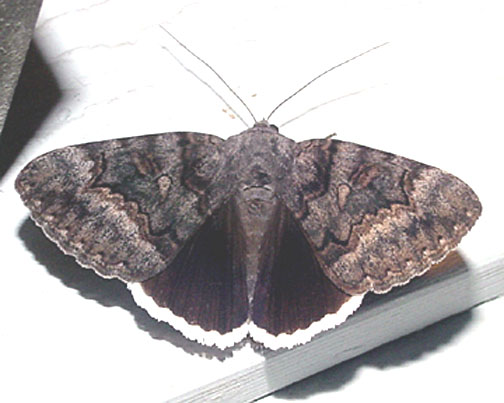
The Epione Underwing, July 28, 2003, courtesy of
Tom Murray
copyright
This site has been created by
Bill Oehlke at oehlkew@islandtelecom.com
Comments, suggestions and/or additional information are welcomed by Bill.
| TAXONOMY:
Superfamily: Noctuoidea
Family: Noctuidae
Group: Noctuinina
Subfamily: Catocalinae
Genus: Catocala, Schrank, 1802
| |
MIDI MUSIC
"Moon River"
copyright C. Odenkirk
MIDI CITYON.OFF
<bgsound src="moon.mid" LOOP=FOREVER>
|
DISTRIBUTION:
Tom Middagh reports them in Minnesota.
Alabama,
Arkansas,
Delaware,
Georgia,
Illinois,
Indiana,
Iowa,
Kansas,
Kentucky,
Louisiana,
Maine,
Maryland,
Massachusetts,
Michigan,
Mississippi,
Missouri,
Nebraska,
New Jersey,
New York,
North Carolina,
Ohio,
Pennsylvania,
Rhode Island,
South Carolina,
Virginia,
West Virginia and
Wisconsin.
The pm line is squared and has a brown band and then a light band
just outside the line. The hindwing is black with pure white fringe
with no barring.
Catocala epione is the same as C. marginata, Fabricius,
1775.
The beautiful image of the specimen to the right was taken by John Himmelman
in Connecticut, August 9, 2003. This species flies to the ground
when threatened. | 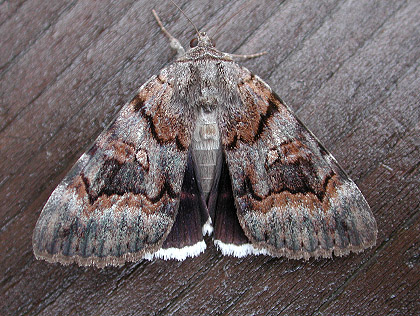 |
FLIGHT TIMES AND PREFERRED FOOD PLANTS:
In northern
portions of its range, Catocala epione flies as a single
generation with moths on the wing from late June to early
September.
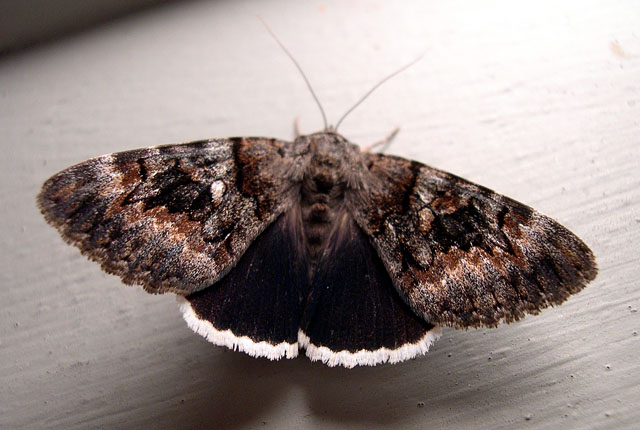
Catocala epione, Londonderry, Rockingham County, New Hampshire,
July 17 - August 3, courtesy of Deb Lievens.
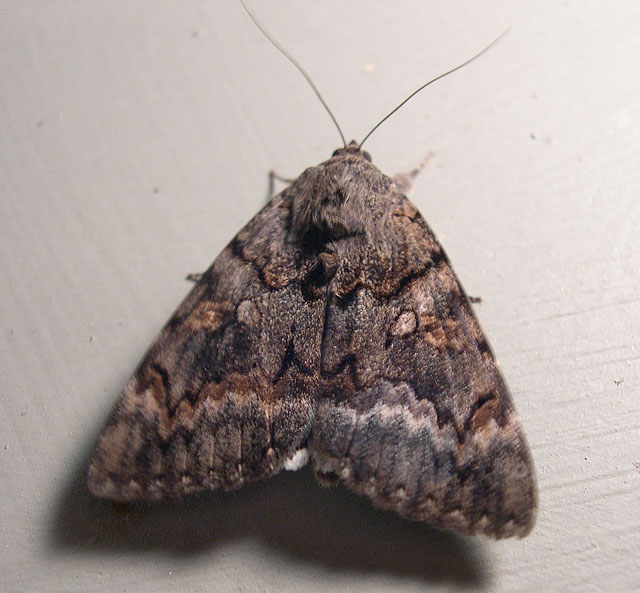
Catocala epione, Londonderry, Rockingham County, New Hampshire,
July 17 - August 3, courtesy of Deb Lievens.
In more southerly locales there may be multiple flights with moths
on the wing from early June, but it is generally felt that all
Catocala species are univoltine.
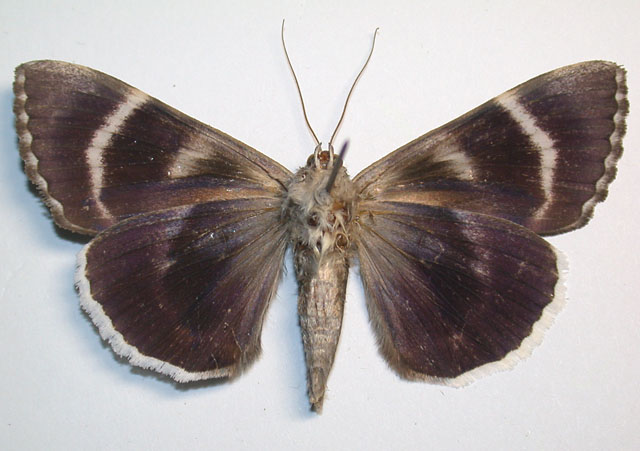
Catocala epione male, Neiley's Landing, Missouri,
June 1995, courtesy of Pierre Legault.
The Catocala epione caterpillar shows a preference for
Carya ovata (shagbark hickory).
Moths come in to lights and to bait.

Catocala epione, Shreveport, Caddo Parish, Louisiana,
March 25, 2011, courtesy of Jeff Trahan.
ECLOSION:
Adults eclose from pupae formed under leaf litter.
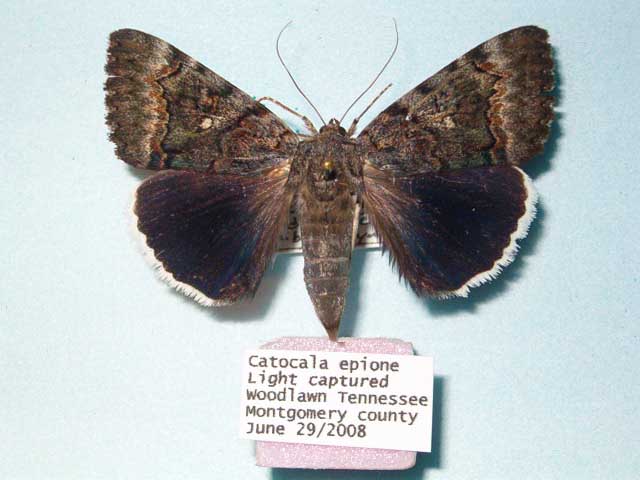
The Epione Underwing, lights, Woodlawn, Montgomery County, Tennessee,
June 29, 2008, courtesy of Tom Payne.
Visit Catocala epione, Athol, Worcester County, Massachusetts, July 17, 2012, Dave Small.
Visit Catocala epione, Franklin, Hampshire County, Massachusetts, August 7, 2015, Betsy Higgins
SCENTING AND MATING:
Catocala epione females
emit an airbourne pheromone and males use their antennae to track the
scent plume.

The Epione Underwing,
by Dale Clark, June 8, Texas.
EGGS, CATERPILLARS, COCOONS AND PUPAE:
Eggs are deposited on tree bark in the fall and hatch the following spring.
|
|
Larval Food Plants
Listed below are primary food plant(s) and alternate food plants.
It is hoped that this alphabetical listing followed by the common
name of the foodplant will prove useful. The list is not exhaustive,
although some species seem very host specific.
Experimenting with closely related foodplants is worthwhile.
Carya ovata......
|
Shagbark hickory
|
This page is brought to you by Bill Oehlke and the
WLSS. Pages are on space rented from Bizland. If you would like to become a "Patron of the Sphingidae/Catocala Sites",
contact Bill.
Please send sightings/images to Bill. I will do my best to respond to requests for identification help.
Enjoy one of nature's wonderments: Live Saturniidae (Giant Silkmoth) cocoons.

|

To show appreciation for this site, click on the flashing
butterfly to the left, a link
to many worldwide insect sites. |
Return to Canadian Index
Return to Main Index









